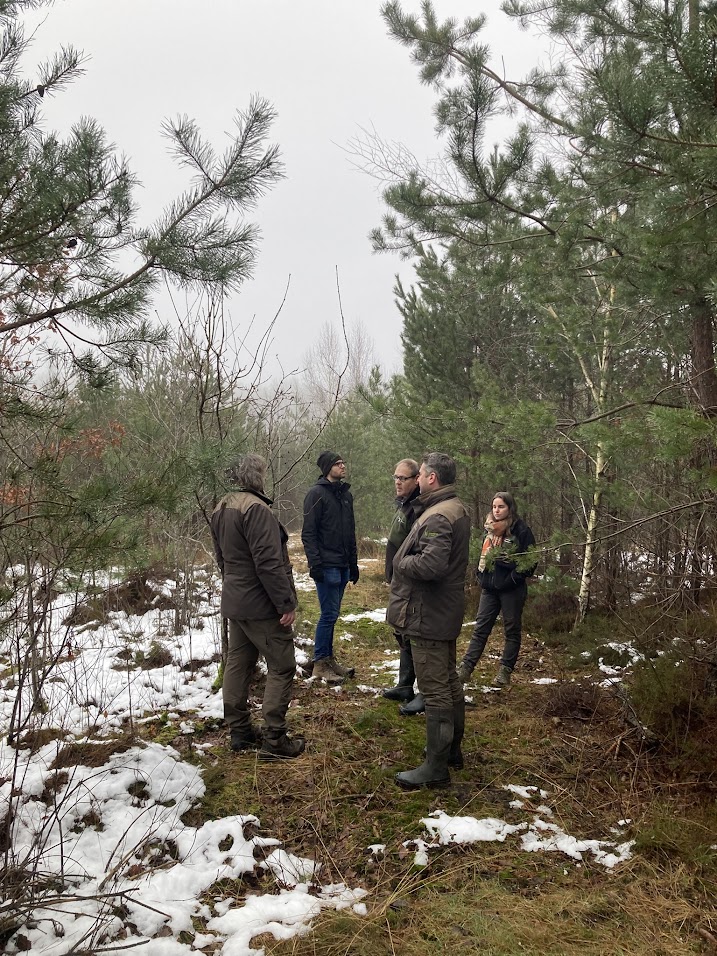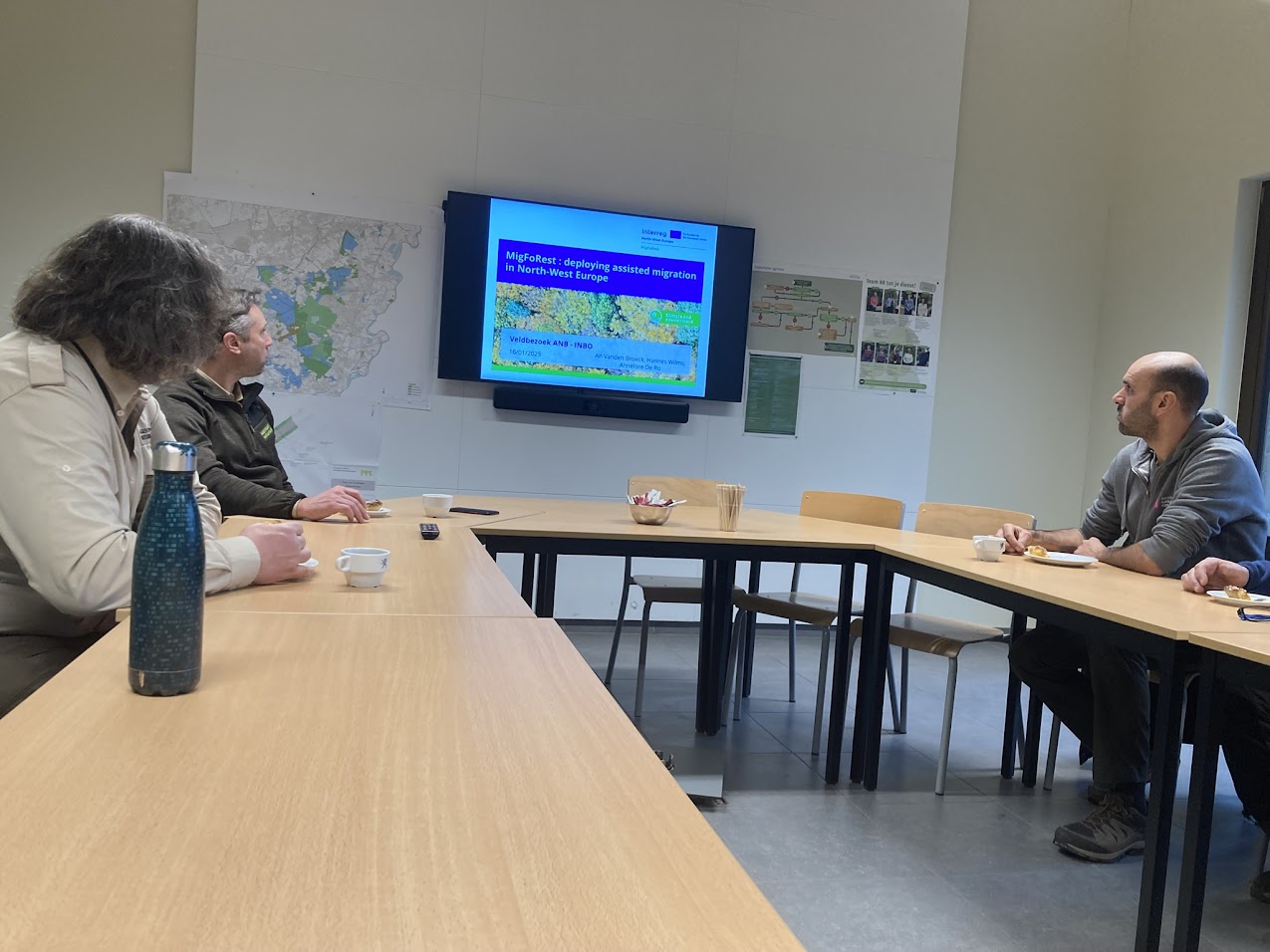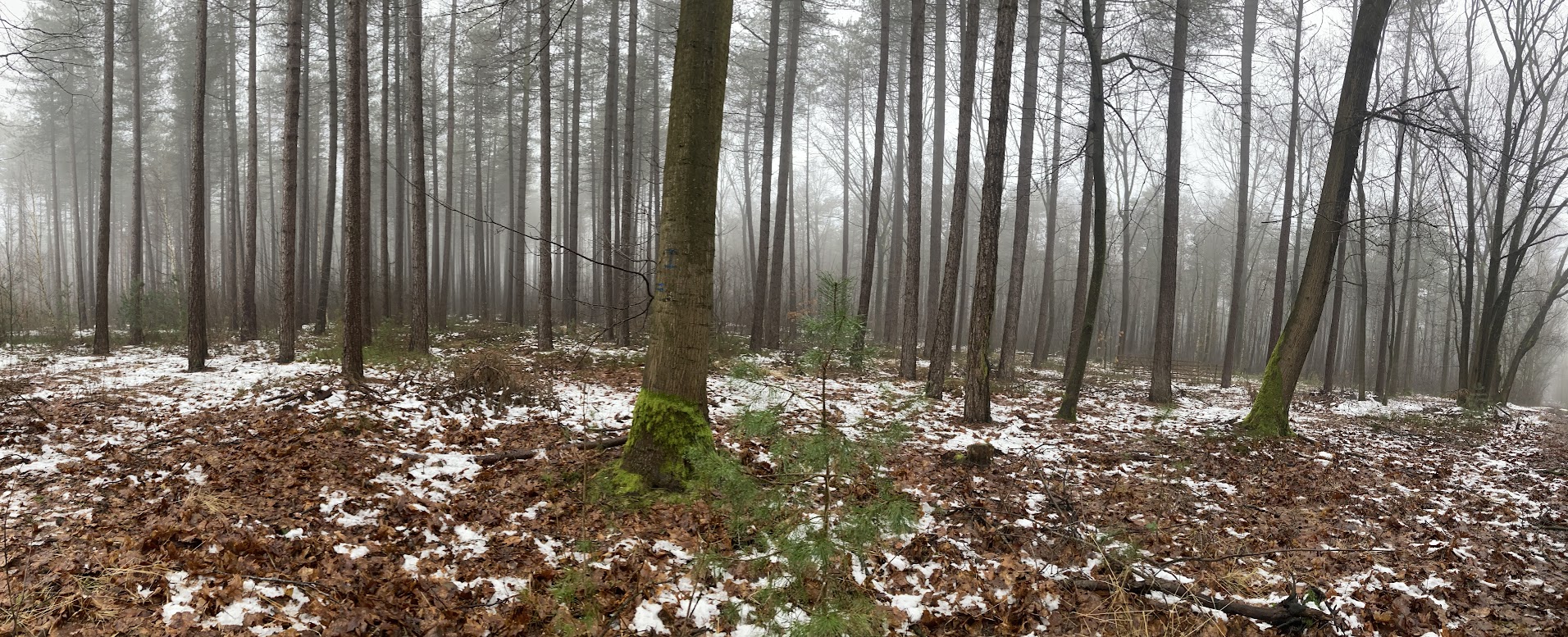Last week, our project colleagues from INBO (Flemish research institute for nature and forest) visited one of our 7 pilot territories : the Kempen, in the North-East of Belgium.
The Kempen is a natural region, encompassing in Belgium a large northern and eastern portion of Antwerp Province and adjacent parts of Limburg Province. More specifically, the visit took part in the Hoge Kempen National Park, in Limburg. This remarkable nature reserve spans over 12,000 hectares of protected forest and heathland, crossing the municipalities of As, Bilzen, Bree, Dilsen-Stokkem, Genk, Lanaken, Maaseik, Maasmechelen, Oudsbergen, and Zutendaal.
The INBO team joined colleagues from the Agency for Nature and Forest (ANB). Key topics included assisted migration, the functional complex network approach and techniques for transforming coniferous forests into rich, mixed deciduous forests.
To prepare deployment, INBO and the forest management of ANB also discussed potential locations within the region and shared experiences with different planting methods. ANB already applied the cell planting method, which we will be using in the migforest project, in many of its plantings and showed their promising results.
Game protection was discussed as well, as roe deer love to nible on newly planted trees which caused unprotected plantings in the region to often fail. Therefore ANB showcased multiple protection methods which could be used to ensure a successful planting.
As the cover picture shows (photo here on top), for several years now, ANB has been mainly using wooden fences to protect the tree cells from game. This way there is no need to remove the fences afterwards nor is there any risk of contamination of the forest soil with microplastics left behind by tree protection.”


